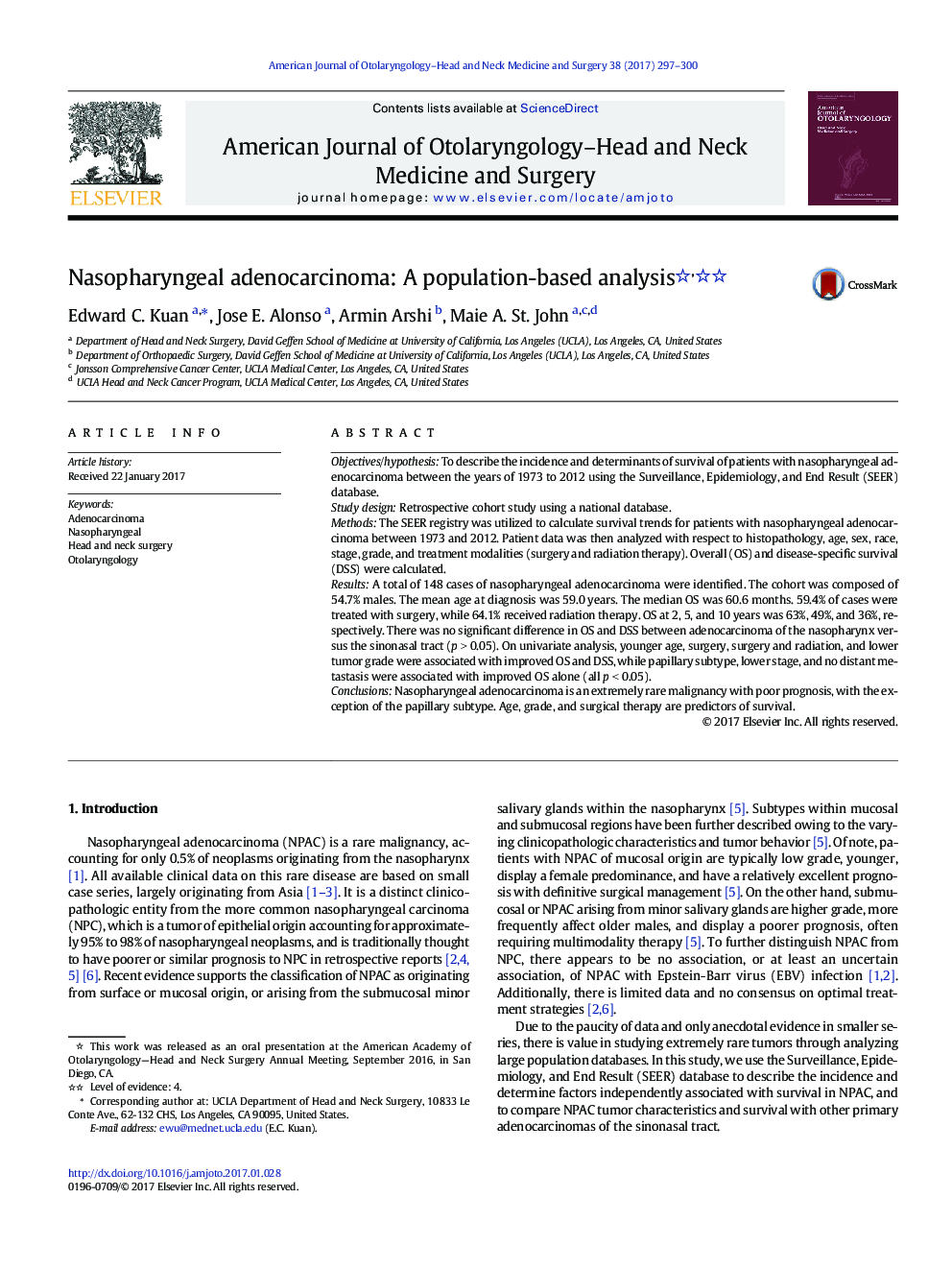| Article ID | Journal | Published Year | Pages | File Type |
|---|---|---|---|---|
| 5713726 | American Journal of Otolaryngology | 2017 | 4 Pages |
Objectives/hypothesisTo describe the incidence and determinants of survival of patients with nasopharyngeal adenocarcinoma between the years of 1973 to 2012 using the Surveillance, Epidemiology, and End Result (SEER) database.Study designRetrospective cohort study using a national database.MethodsThe SEER registry was utilized to calculate survival trends for patients with nasopharyngeal adenocarcinoma between 1973 and 2012. Patient data was then analyzed with respect to histopathology, age, sex, race, stage, grade, and treatment modalities (surgery and radiation therapy). Overall (OS) and disease-specific survival (DSS) were calculated.ResultsA total of 148 cases of nasopharyngeal adenocarcinoma were identified. The cohort was composed of 54.7% males. The mean age at diagnosis was 59.0 years. The median OS was 60.6 months. 59.4% of cases were treated with surgery, while 64.1% received radiation therapy. OS at 2, 5, and 10 years was 63%, 49%, and 36%, respectively. There was no significant difference in OS and DSS between adenocarcinoma of the nasopharynx versus the sinonasal tract (p > 0.05). On univariate analysis, younger age, surgery, surgery and radiation, and lower tumor grade were associated with improved OS and DSS, while papillary subtype, lower stage, and no distant metastasis were associated with improved OS alone (all p < 0.05).ConclusionsNasopharyngeal adenocarcinoma is an extremely rare malignancy with poor prognosis, with the exception of the papillary subtype. Age, grade, and surgical therapy are predictors of survival.
